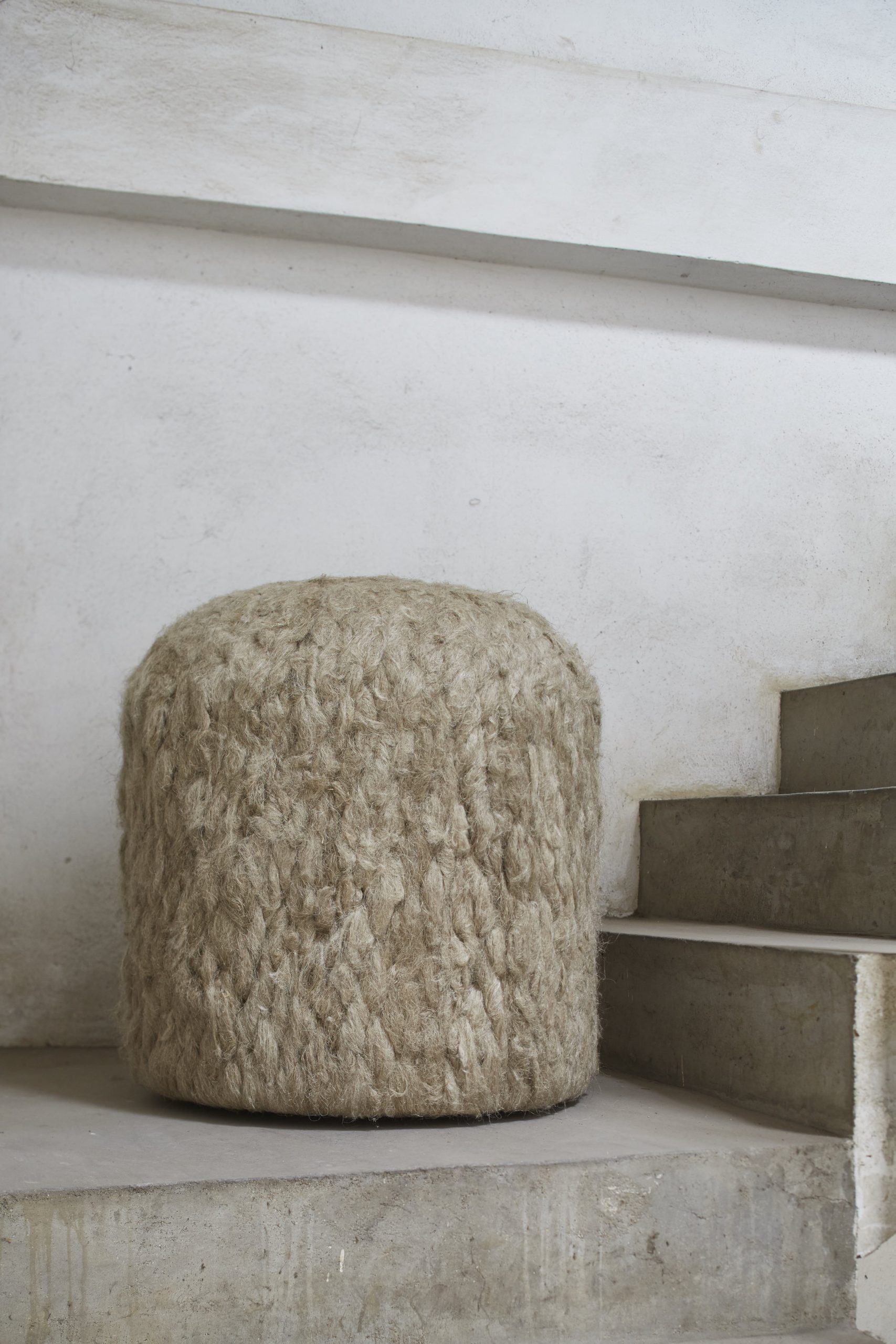Pauline Esparon plays with the notion of «rawness», a form of archaism, a primary state of materials before their standardization by industry. Forms from the vegetal, the animal or the mineral worlds can be intertwined. Her works always start with the investigation of materials, and slide from an instinctive research to a definite shape.
This approach is as sensible as contextual, by questioning both the qualities of materials and the culture of materials, their heritage, their survival, their systems. Each project envisions a proposition to tweak production for the better and consider humble materials, processes, purposes of production as well as possible perspectives for crafts.
Pauline Esparon‘s work has entered prestigious public collections, such as Le Mobilier National and the CNAP (Centre National d’Arts Plastiques).
Let’s discover more about her
– What are the biggest challenges you have met in your career?
I think the biggest challenge was to launch my own design studio, right after my studies, with small experiences, no budget but a very big desire. I felt very strongly that I would regret more to never try it than to actually make mistakes in trying it. It’s a big thing to expose an inner creativity and sensibility to the outside world, it is a challenge to go beyond the fear to let it go to the appreciation of others. But I’ve always believed that intuition is the fairest and strongest feeling to follow.
– How would you describe your work?
I am very sensible to rough materials, before they get transformed and potentially standardized by the industry. I like them at their primary state : my work is almost to rewind back to this elementary state. I try to discover their initial tactilities, aspects, feel… I experiment a lot, I let the intuition guide me (I never draw my pieces). It is totally empirical.
I also focus on the context of production and pay attention to the resources, the craft, the industries behind a material. I try to stimulate local networks, give perspectives to disappearing crafts, give attention to the history and the culture behind things.
– How is your passion for visual art and design born?
I think this familiar feeling I get with natural materials comes from my childhood : I used to play a lot in nature and I was very much into using tree branches, earth, leaves to play around. So I got this playful link to materials, and I kept this intuitive way of transforming them. And today I make objects almost the same way I made tree houses. Of course, the more I’ve had a design and art culture, the more it confirmed this approach but I think this passion really takes its roots in nature itself and the curiosity for what’s directly surrounding me.
– What is the most difficult work you have done and why?
My work with parchment was surely the most difficult. Firstly, it is a very rare know-how and only two persons in France still make this material. The craft is very patient and meticulous. And the way I work with parchment gives a total freedom to the material. In the case of the Pellis lamp, it naturally bends and that bending creates the shape. It is therefore totally unpredictable and sometimes it crinkle, wrinkle…. But that’s also the poetry of letting the material express itself and let it be still alive.
Last year I also did a project with stone carving. This craft has always been fascinating to me because it is one of the first materials the man has transformed and at the same time it is so unintuitive to break the most heavy, monolithic and eternal material of all… It was difficult because it was very physical and very patient : I think it really challenges the body and the mind.
– What is your main source of inspiration?
I am influenced mainly by anonymous objects that belong to different periods before the industrialisation. I am very moved by the way materials that surround us directly were used to make objects, tools, artefacts, in a very practical approach. This sense of appropriation is very beautiful and humble to me.
I also love the Art Deco period, at the beginning of the century, where there is a great balance between simplicity and sophistication. Very noble materials and crafts were used in a sober and delicate way, giving such elegance and essence to the pieces.
– What about your next project?
I am settling up my studio patiently, it’s located in a former paper factory and the space was really rough, with a lot of building works to do. It’s a way for me to get a step in interior design from a white page, while keeping the freedom to make it for my own taste and needs. I can directly experiment there.
And I am working on new pieces, made of flax and parchment too …
– Outside of design, what are you currently interested in and how is it influencing your design work?
Traveling is still something very important for me, and I think it doesn’t even have to be far to be boundary-breaking. It feeds ideas, vibrates sensitivity and always opens the mind. I think the feeling in itself to be unfamiliar and excited by a place stimulates the inspiration and the desire. It can be the shape of a branche, a door handle, a smell, a sound : since my senses are my tools to work in this empirical approach, I give a big place to them while traveling.

